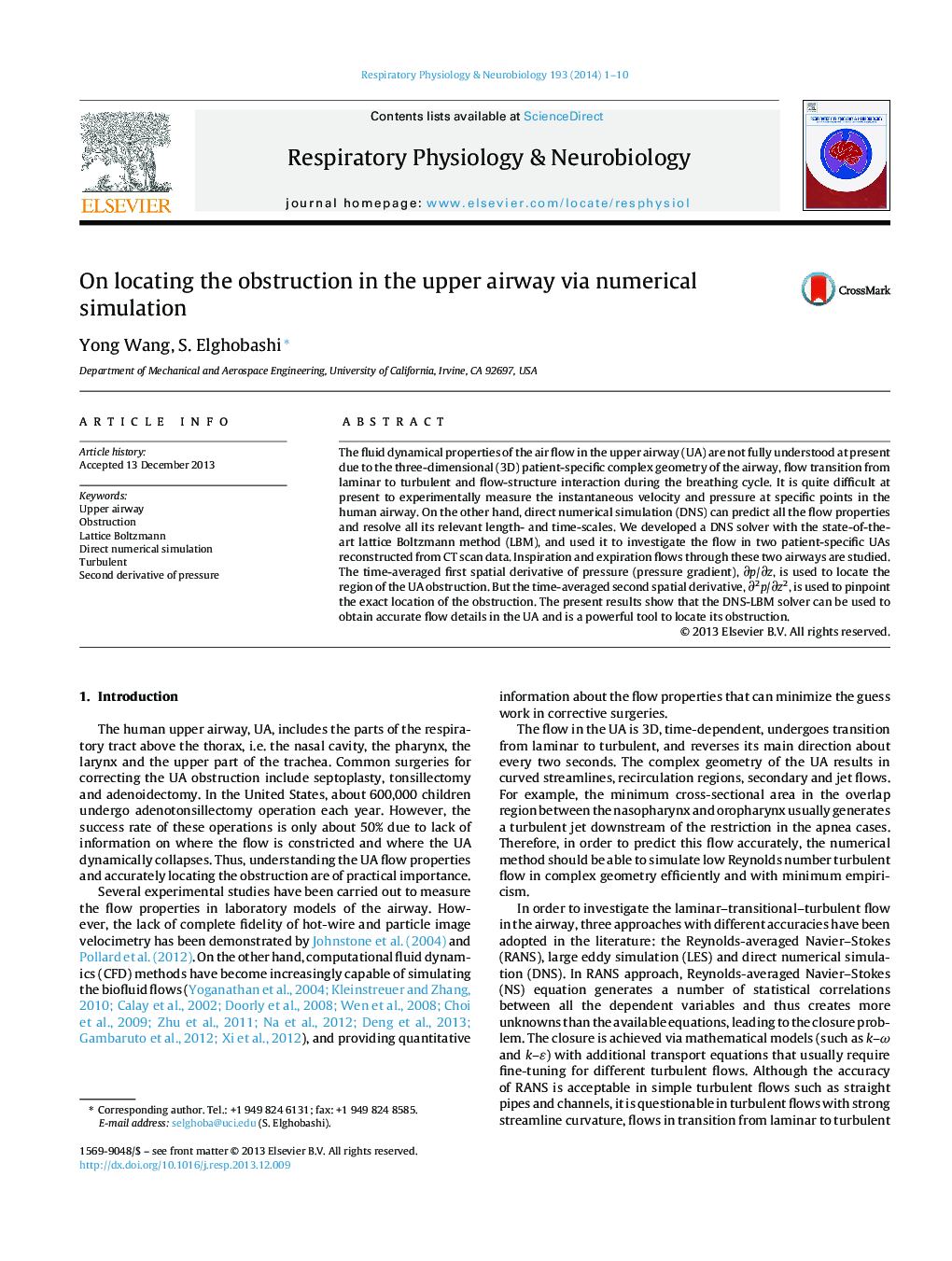| Article ID | Journal | Published Year | Pages | File Type |
|---|---|---|---|---|
| 2847069 | Respiratory Physiology & Neurobiology | 2014 | 10 Pages |
•We developed a lattice-Boltzmann method to predict the flow in the upper airway (UA).•The time-averaged pressure gradient is used to locate the region of UA obstruction.•The second derivative of pressure pinpoints the exact location of the UA obstruction.
The fluid dynamical properties of the air flow in the upper airway (UA) are not fully understood at present due to the three-dimensional (3D) patient-specific complex geometry of the airway, flow transition from laminar to turbulent and flow-structure interaction during the breathing cycle. It is quite difficult at present to experimentally measure the instantaneous velocity and pressure at specific points in the human airway. On the other hand, direct numerical simulation (DNS) can predict all the flow properties and resolve all its relevant length- and time-scales. We developed a DNS solver with the state-of-the-art lattice Boltzmann method (LBM), and used it to investigate the flow in two patient-specific UAs reconstructed from CT scan data. Inspiration and expiration flows through these two airways are studied. The time-averaged first spatial derivative of pressure (pressure gradient), ∂p/∂z, is used to locate the region of the UA obstruction. But the time-averaged second spatial derivative, ∂2p/∂z2, is used to pinpoint the exact location of the obstruction. The present results show that the DNS-LBM solver can be used to obtain accurate flow details in the UA and is a powerful tool to locate its obstruction.
